Lawrence of Arabia as Archaeologist
040
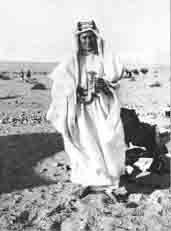
Most people picture T.E. Lawrence as the dashing leader dressed in white and gold Arab robes portrayed by Peter O’Toole in the 1962 film Lawrence of Arabia. While the real Lawrence was not exactly like the character in the David Lean film—he never deliberately burned his finger with a match or said he enjoyed killing people, for instance—he was, nevertheless, one of the most colorful figures to emerge from World War I.
Riding a camel and fighting like a Bedouin tribesman, T.E. Lawrence played a leading role as a British adviser to Prince Feisal during the Arab revolt against Turkish rule (1916–1918) and was clearly torn between his pro-British and pro-Arab sympathies. As an adviser to Winston Churchill after the war, Lawrence helped establish Prince Feisal’s family, the Husseins, as rulers in the Middle East. The present King Hussein of Jordan is the beneficiary of Lawrence’s work in helping his grandfather, King Abdullah, solidify control of Transjordan.
Much of Lawrence’s story is fairly well known, thanks not only to the Lean film but to the publicity work of the American journalist Lowell Thomas, who as early as 1919 began telling Lawrence’s story—albeit not always accurately—in slide shows that he presented to millions of people in New York and London. Since Lowell Thomas’s biography, With Lawrence in Arabia (1924), approximately 50 biographers have kept the story current.
But despite all this publicity, it is sometimes forgotten that Thomas Edward Lawrence (1888–1935) was a very competent Middle Eastern archaeologist before the war and that his archaeological activities and Biblical interests helped shape him for the military and political role he later played. Although his pre-war work focused on the Crusaders and on the Hittites, he contributed to the resolution of at least one important issue in Biblical archaeology and touched on several others.
Indeed, Lawrence derived his earliest interest in the 042Middle East from his religious training. Lawrence’s family belonged to St. Aldate’s Church in Oxford, an Evangelical congregation headed by one of the leaders of that movement in England, Canon A.M.W. Christopher. The Bible was read in Lawrence’s home in the mornings before he and his four brothers went to school and on Sundays, and he studied the Holy Land during his Sunday school classes. Given this training and his exceptional abilities, it is not surprising that at the age of 16 Lawrence achieved distinction in an examination of religious knowledge.1
Lawrence’s family was more devout than most—with special reason. His father, originally named Chapman, was the lord of a manor in Ireland. He ran off with the family governess, leaving four daughters and a wife who never divorced him. The father and the governess went to Wales and changed their name to Lawrence, but they could never marry. The governess, Lawrence’s mother, became extremely religious because she felt she had sinned morally. She stated more than once that God hated the sin but loved the sinner, and made sure her five sons received a thorough religious education. Lawrence’s mother and one of his brothers later became missionaries in China.
Lawrence was dispossessed of his rightful inheritance because of his parents’ illicit relationship, which may have given him sympathy for the national movements of various groups who considered themselves dispossessed. It may also have strengthened his steadily developing interest in castles and their lords.
At a relatively early age, Lawrence began studying the Middle Ages, especially the time of the Crusades. When he was only nine, he took up the very British hobby of “brass rubbing,” recording the inscriptions and insignia on medieval tombs by placing a cloth over them and rubbing them with a waxy substance, leaving a black impression on the cloth. He loved medieval artifacts, including books, crypts and clothing. As a teenager, he read Malory’s Morte d’Arthur and other medieval romances.
At 13, Lawrence bicycled to various castles and churches in England, and during the summers of 1906 through 1908, he toured France, again on bicycle, studying castles and sending home detailed letters, sometimes accompanied by excellent sketches, concerning them. During his student days at Oxford from 1907 to 1910, these pursuits culminated in a professional interest in the great strongholds built by the Crusaders in the Holy Land. He was encouraged in this interest by D.G. Hogarth, keeper of the Ashmolean Museum in Oxford, who had noticed Lawrence’s exceptional abilities when Lawrence worked at the museum as an undergraduate.
Lawrence chose the topic of Crusader castles, then a relatively new subject of academic study, for his honors B.A. thesis, and in the summer of 1909 set out to do fieldwork in the Middle East. This involved a 1,100-mile walking tour in broiling heat. During that summer, Lawrence who turned 21 on August 16, 1909, visited no fewer than 36 castles in the area that now comprises Syria, Lebanon and Israel. During this trip, Lawrence, although never as religious as his mother, was nonetheless influenced by Biblical memories. After walking around 044the Sea of Galilee, he wrote that it inspired him to think of how the area looked in the time of “Our Lord.” He noted that Palestine had once been rich farmland and that “the sooner the Jews farm it all the better: their colonies are bright spots in a desert.”2
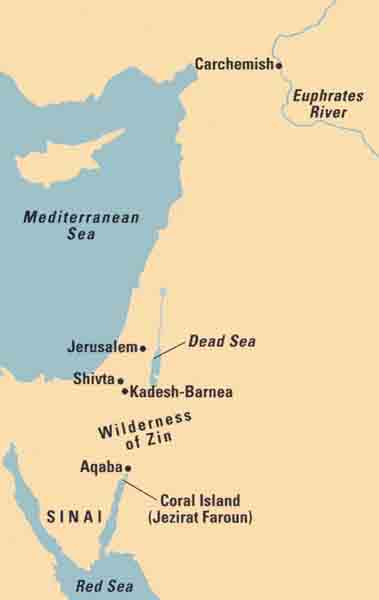
Based on this firsthand research, Lawrence’s thesis was so good that his tutor threw a dinner party in his honor and he received a “First,” the rare, highest grade possible at Oxford. The thesis was first published in 1936 and has recently been published again in two different editions. In it, Lawrence advances the controversial idea that except for the newer fortresses of the Templars, the Crusader castles were influenced almost exclusively by Western designs. The prevailing opinion at the time was that the Crusaders had been strongly influenced by Eastern architectural designs. It now appears that Lawrence was extreme in finding only Western influence in Crusader architecture, apart from that of the Templars. It is now generally agreed that all Crusader orders were influenced by both Eastern and Western castle architecture and that they often created their own unique designs. The longer the Crusaders stayed in the East, the more Eastern influence exerted itself on them.3
But this issue is not definitively resolved, and Lawrence’s thesis continues to be respected by experts and is regularly cited in their works. Lawrence has been praised, for instance, for recognizing the superiority of Castle Saone (or Sahyun) to all other Crusader castles in terms of military architecture and for noting in this castle the prevalence of square tower “keeps,” or strongholds, a Western feature that had been overlooked by other scholars.
After Lawrence’s graduation in 1910, Hogarth used a small scholarship to bring him to the dig that he himself was conducting in Jerablus, Syria. This was the site of Carchemish, the eastern capital of the ancient Hittite empire. The Hittites (and later the neo-Hittites) ruled much of the Middle East from about the 13th through the 9th century B.C.E.a They are referred to in many places in the Bible: Abraham bought the cave of Machpelah from Ephron the Hittite (Genesis 23) and both David and Solomon enlisted Hittites among their soldiers. David had Uriah the Hittite killed so that he could have Uriah’s wife, Bathsheba (2 Samuel 11). Solomon apparently had Hittite wives and sold chariots and horses to the Hittites (1 Kings 10:29; 11:1). This powerful people was, however, defeated by the Assyrian king Sargon II at Carchemish in 717 B.C.E.
At this dig, Lawrence worked not only with Hogarth but with C. Leonard Woolley, who later discovered Ur of the Chaldees.b Here Lawrence served as the foreman of a group of local workers. He copied inscriptions, photographed finds, catalogued discoveries, bought antiquities and used his mechanical ingenuity to solve any small problems that would arise. This dig and the subsequent publication of its results, titled Carchemish: Report on the Excavations at Djerabis on Behalf of the British Museum, containing 045contributions by Lawrence, set the course of future British study of the Hittites.4 During the dig, Lawrence played a leading role in salvaging many important objects from a cemetery that was being looted, and recognized that some of the graves were from the later Parthian period (c. 250 B.C.E.—250 C.E.).5
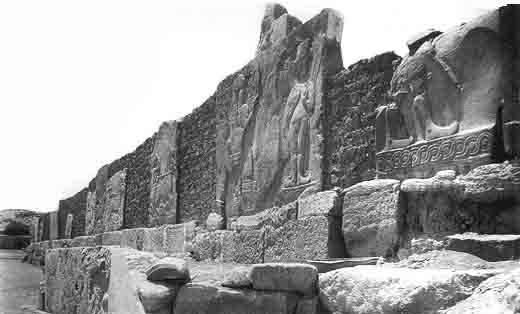
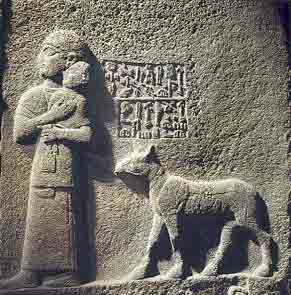
As an apprentice at Carchemish, Lawrence increased his knowledge of archaeology and made worthy contributions of his own. He also took part in covering up a spying expedition—a precursor of things to come.
In December 1913 a telegram from the British Museum directed Woolley and Lawrence to join Captain Stewart Newcombe of the Royal Engineers in Beersheva, then 046part of Palestine, for a six-week survey. On the surface, the expedition was archaeological: to look at the Biblical, Nabatean and Byzantine sites in the northern Sinai and southern Negev deserts for the Palestine Exploration Fund. This archaeological expedition (which came to be called the Wilderness of Zin survey) received prior Turkish approval and was confined to a relatively small area. But as Lawrence wrote his mother, the real object was to spy on the Turkish defenses in southern Palestine, about a hundred miles from the Suez Canal. Defense of the canal was always a top priority for the British because ships traveling to British-controlled India could avoid circumnavigating Africa by cutting through the canal. Now that European storm clouds had begun to gather, and Turkey gave signs of allying itself with Germany, the British wanted to make sure the canal was secure against attack from the north.
In those days, a semicasual relationship existed between archaeologists and intelligence officers. While surveying foreign sites, archaeologists could report anything of military interest that they saw. Even the first British survey of the Holy Land, conducted by the young Lord Horatio Kitchener in 1874, mixed archaeological and military purposes.6 Kitchener was forced by events occurring elsewhere to leave only three weeks after his arrival. Now, as British Agent in Egypt, Kitchener appreciated the military potential of the new survey of northern Sinai conducted by Newcombe, Woolley and Lawrence.
Woolley and Lawrence moved south from Beersheva, looking at Nabatean and Byzantine ruins, while Newcombe’s survey parties took a closer look at the entire area of the exploration. The dusty town of Beersheva, the administrative center of the area, where the Turkish military governor approved the exploration, was to become General Edmund Allenby’s first conquest in his Palestine campaign during World War I. Newcombe’s military team covertly surveyed Turkish fortifications, the topography and possible lines of supply and communication. Passing small forts along the route from Beersheva to Nitzana, where the Turks had built a larger fortification on the border with British Egypt, Lawrence, his archaeological colleagues and the military survey teams could view much of the Turkish defense system. Lawrence felt that the Turks’ preparations would be useless because fortified positions were of little avail against a mobile enemy in desert country. This idea, learned during the Wilderness of Zin survey, later became the basis of his guerrilla theory. After arriving at Kossaima, Lawrence, his servant Dahoum and Newcombe traveled south, exploring the northern Sinai in a line down to Aqaba, at the head of the Red Sea. Woolley went northeast, exploring what are today called Shivta, Avdat and Kurnub, among other Nabatean and Byzantine ruins.
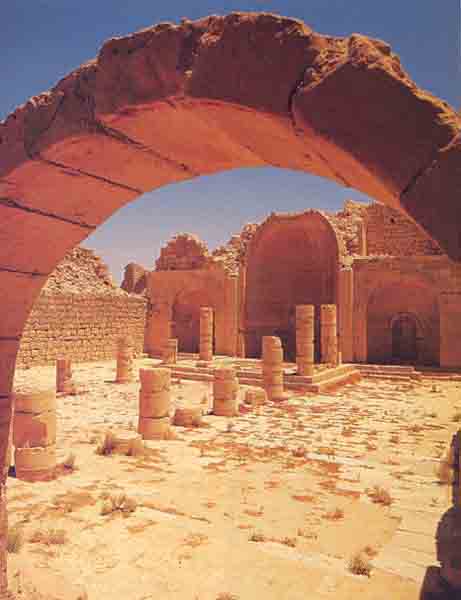
Since Aqaba was outside the Turkish-approved survey area, Lawrence and Dahoum had to evade the Turkish police to explore this town, which would become the site of Lawrence’s most important military victory during World War I. After a daring swim during which they used an improvised raft made of their camel water-tanks, they explored the ruined structure, possibly of Crusader origins, on the Ile de Graye (now also called Jezirat Faroun and the Coral Island), about 250 yards from the Sinai coast and approximately 7 miles south of Aqaba.c Lawrence was ordered away from Aqaba after this expedition but was able to study the area north of Aqaba on his return journey to Carchemish via Petra, Maan and Damascus.

After the Wilderness of Zin survey, in June 1914, Newcombe sent Lawrence and Woolley along the planned route of the railway that the Germans were building through the mountains near the Carchemish site. Besides seeing the work on the railway with their own eyes, they secured all of the blueprints for it from a disgruntled Italian engineer.7
When World War I broke out in August 1914, Lawrence and Woolley were in England. They were told to finish their report on the survey quickly, to make the survey appear to have been solely archaeological in intent.8 While subscribers to the Palestine Exploration Fund publications received Woolley and Lawrence’s archeological report, titled The Wilderness of Zin, Newcombe’s detailed maps and photos of the area went to the British military.
The surprising thing is that this rushed book, designed as a cover for a relatively brief spying survey, remains of permanent importance in Biblical studies. It identified the northern Sinai site Ain el-Qudeirat, rather than nearby Ain Kadeis (which had previously been proposed), as the site of Biblical Kadesh-Barnea, where the Hebrews in the Exodus settled and from whence Moses sent men to spy out the land of Canaan (Deuteronomy 1:2, 19, 2:1; 047Numbers 13:3–21). According to the prefatory note that begins the book, Lawrence was “chiefly responsible” for “most of Chapter IV,” which investigates and discusses his and Woolley’s Kadesh-Barnea finds. But as Lawrence wrote in his introduction, he and Woolley consulted on all aspects of the book, and so it is impossible to assign any particular sentence or idea to one or the other with certainty.
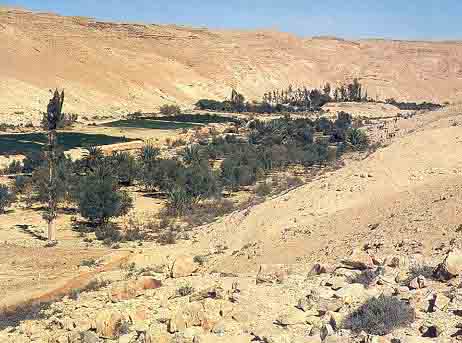
The Israeli archaeologist Rudolph Cohen has noted that Lawrence and Woolley were the first to study the remains on the Ain el-Qudeirat tell.d He bases his identification of the site as Kadesh-Barnea on the reasons given by Lawrence and Woolley in The Wilderness of Zin, and by Woolley in a 1914 article,9 even though Cohen’s own excavations uncovered no remains dating earlier than the tenth century B.C.E., the time of King Solomon. In The Wilderness of Zin, Lawrence and Woolley speculate that the tribes of Israel must have numbered some thousands and were possibly “a tribal group keeping to one district and moving a mile or two in this direction or in that as they devoured the pasture.” If so, they reasoned that only in the Kossaima 070district, which includes the sites of Ain el-Qudeirat, Kossaima, Muweilleh and Ain Kadeis, was there enough water and greenery to support a large tribal group. Moreover, Moses, in writing to the King of Edom, described Kadesh as “a city in the uttermost of thy border” (Numbers 20:16), and Lawrence and Woolley thought that the fortifications at Ain el-Qudeirat—assuming, on the basis of pottery, that they dated from the time of Moses—more nearly fit that description than any other site in the Kossaima area.
Woolley and Lawrence were also the first to identify the rough earthenware pottery now known as “Negev” pottery.
The Wilderness of Zin also increased our knowledge of the Nabatean and Byzantine sites that dot the desert around Beersheva. The Nabateans were a group of desert dwellers who appear in Greek and Roman sources beginning in the fourth century B.C.E., and whose kingdom in southern Palestine was annexed by the Romans in 106 C.E., when they largely disappeared from history. Marvelous water engineers, desert farmers and traders, they established a chain of cities from Petra (now in Jordan) across the desert to the Mediterranean. Their cities continued to be important even after the passing of Roman rule; the Byzantines who inherited the Eastern Roman Empire fortified them, built churches and continued to rely on these cities as trading centers. They repaired and augmented the Nabateans’ great dams and water systems, adopting their methods of extensive terrace farming. So when Lawrence and Woolley surveyed the area, they saw only the Byzantine layer. Lack of time, and the inability to date pottery precisely, meant that they were unable to probe beneath the surface or date the surface potsherds. Nonetheless, their plan of the Nabatean/Byzantine city of Shivta, about 30 miles south of Beersheva, remains “one of the most precise and comprehensive to date,” according to Arthur Segal of Haifa University.10 The expedition to Shivta led by H.D. Colt in the 1930s corrected only minor details of their mapping work.
Lawrence and Woolley’s consideration of climatic issues remains especially impressive. Some authorities before World War I claimed that the climate of the Negev and Sinai had changed over the years and that variations in rainfall accounted for fluctuations in the Negev’s population. They even attributed the end of Byzantine rule here to a diminished water supply. Lawrence and Woolley disputed these views. They saw that after rain the water in the Nabatean and Byzantine cisterns rose exactly to the water level of Byzantine times, as indicated by rings around the cisterns’ walls. They also noted a lack of wood in Byzantine buildings, which indicates that in the Byzantine period, as now, there was an absence of trees. They remarked, too, that the Byzantine storehouses that the Bedouin continued to use were still capable of keeping grain good for several years—an especially valuable characteristic in a land of low rainfall and frequent drought. Finally, they pointed to the Byzantine terrace system and to the fact that Byzantine iron ploughs cut deeper than the wooden ones used by the Bedouin, thus keeping seeds farther from the sun and closer to the moisture hidden in the ground. They therefore explained the end of Byzantine dominance as resulting from Arab incursions, and not from a change in the climate.
Forty years later Professor Nelson Glueck came to the same conclusion about the early Negev dwellers, writing that they “succumbed to conquest by arms and not to uncontrollable forces of nature.”11
While finishing work on The Wilderness of Zin, in the fall of 1914, Lawrence took a job with the Geographical Section of the General Staff (the military high command) in London. In December 1914, Lawrence was sent to join Military Intelligence in Cairo. He worked there for two years, until he was sent to advise one of the leaders of the Arab revolt, Prince Feisal, in the field. There followed, until the capture of Damascus by British and Arab forces in late 1918, the adventures 071for which he remains famous. These included the capture of the city of Aqaba after a long and difficult march through the northern Arabian desert, which took the Turks by surprise, and an extremely dangerous solo trip through Turkish lines to a clandestine meeting with Ali Riza Pasha, the governor of Damascus, who was secretly working with Lawrence and Feisal against the Turks. In addition, Lawrence perfected the hit and run attack and the use of propaganda among civilians—techniques that many other guerrilla commanders all over the world later imitated.
After the war, from 1919 to 1926, Lawrence wrote and rewrote a memoir of his role, Seven Pillars of Wisdom, which is now widely regarded as one of the finest British autobiographies of the 20th century. Given his firsthand knowledge of and meditation on the Biblical sites in the Negev and Sinai, as well as his early Biblical training, it is no surprise to find that Lawrence refers to both the Old and the New Testaments at many points in this book. Indeed, some of the most memorable statements in the book derive from the Bible. For instance, the title comes from Proverbs 9:1: “Wisdom hath builded her house, she hath hewn out her seven pillars.” In his notes he compares both the book and the Arab revolt to the construction of a house, proceeding from foundations to finished product. But this image of “seven pillars of wisdom” also conjures up a ruined temple lying in the desert, and the Arab revolt did come to nought when France evicted Feisal from Syria in 1920 and took control of the country.12
Just as interesting as Lawrence’s use of Biblical phrases are his thoughts on Judaism and Islam, which he at first regarded as too ascetic and abstract to embody real love between God and man. But as he cleansed himself of the dirt of war and politics in a pool in the Wadi Rumm, in modern Jordan, as if in a baptism, he met an old Arab man. This man, whom he names a “new prophet,” declared, “The love is from God; and of God; and towards God.” This statement seemed to overturn all of Lawrence’s theories about the distance between God and man in Judaism and Islam, and to bring those religions closer to his conception of Christianity.
Lawrence also refers to his involvement in the Arab movement, which sometimes pitted him against the interests of his own British commanders and subjected him to very painful physical and mental tests, as a form of crucifixion.
Because of the trust they placed in him, Lawrence was able to play a major role in bringing together Jews and Moslems in the service of peace. In 1919, when he was at the Paris Conference, he served as go-between for Prince Feisal, the leader of Arab nationalism at that time, and Chaim Weizmann, the head of the Zionist movement, when they signed the only treaty between the two movements until the 1978 Camp David accords. Both sides pledged to help one another and to work together. When Feisal was evicted from Syria by the French in 1920, this treaty became void. But that it existed at all was thanks entirely to Lawrence’s persistence and persuasion. To get them to sign it, Lawrence may have even mistranslated a bit to convince each party that the other was being more flexible than was in fact the case. But both Feisal and Weizmann always felt that Lawrence was friendly to their movements and that he had done them a service by bringing them together.
Lawrence clearly possessed many of the seven essential attributes of a good leader stated in Deuteronomy 1:13 and Exodus 18:21: wisdom, understanding, experience, ability, fear of God, trustworthiness and incorruptibility. He was also a fine archaeologist and writer. Undoubtedly, his abiding interest in and knowledge of the Bible formed the impetus for his success in many fields.
Most people picture T.E. Lawrence as the dashing leader dressed in white and gold Arab robes portrayed by Peter O’Toole in the 1962 film Lawrence of Arabia. While the real Lawrence was not exactly like the character in the David Lean film—he never deliberately burned his finger with a match or said he enjoyed killing people, for instance—he was, nevertheless, one of the most colorful figures to emerge from World War I. Riding a camel and fighting like a Bedouin tribesman, T.E. Lawrence played a leading role as a British adviser to Prince Feisal during the Arab revolt against […]
You have already read your free article for this month. Please join the BAS Library or become an All Access member of BAS to gain full access to this article and so much more.
Already a library member? Log in here.
Institution user? Log in with your IP address or Username
Footnotes
See Aharon Kempinski, “Hittites in the Bible—What Does Archaeology Say?” BAR 05:05.
See Edward M. Luby, “The Ur-Archaeologist: Leonard Woolley and the Treasures of Mesopotamia,” BAR 23:02.
See Alexander Flinder, “Is This Solomon’s Seaport?” BAR 15:04.
Rudolph Cohen, “Did I Excavate Kadesh-Barnea?” BAR 07:03.
Endnotes
Jeremy Wilson, Lawrence of Arabia: The Authorized Biography of T.E. Lawrence (New York: Atheneum, 1990), p. 27. This is the source for quotations from Lawrence’s letters throughout this article.
T.E. Lawrence, The Letters of T.E. Lawrence, ed. David Garnett (London: Cape, 1938), p. 74. This is also the source for quotations from Lawrence’s letters that appear throughout this article.
See the discussion of this issue in Stephen E. Tabachnick and Christopher Matheson, Images of Lawrence (London: Cape, 1988), pp. 97–99; see also Denys Pringle’s introduction to Lawrence, Crusader Castles (Oxford: Clarendon, 1988), pp. xxi–xl. Another edition of Crusader Castles was published in London by Michael Haag, in 1986.
C. Leonard Woolley, Lawrence and P.L.O. Guy, Carchemish: Report on the Excavations at Djerabis on Behalf of the British Museum, 3 vols. (London: British Museum, 1914, 1921, 1952).
P.R.S. Moorey, Cemeteries of the First Millennium B.C. at Deve Hüyük, near Carchemish, Salvaged by T.E. Lawrence and C.L. Woolley in 1913, British Archaeological Reports (1980), pp. 3–4.
See Neil Asher Silberman, Digging for God and Country: Exploration, Archaeology, and the Secret Struggle for the Holy Land, 1799–1917 (New York: Knopf, 1982), pp. 119–123.
Woolley, “The Desert of the Wanderings,” Palestine Exploration Fund Quarterly Statement (1914), pp. 65–66.
My translation of Arthur Segal, Shivta: Portrait of a Byzantine City in the Negev Desert (in Hebrew), in Shivta 9 (Haifa: University of Haifa Press, 1986).
Lawrence also uses quotations from Matthew 5:39, about turning the other cheek, and 6:24, “service to two masters irked me,” referring to his role with the British and Arabs. See Jeffrey Meyers, The Wounded Spirit: A Study of “Seven Pillars of Wisdom” (London: Martin Brian & O’Keeffe, 1973), p. 148, for an appendix listing 17 Biblical allusions in this masterpiece.
